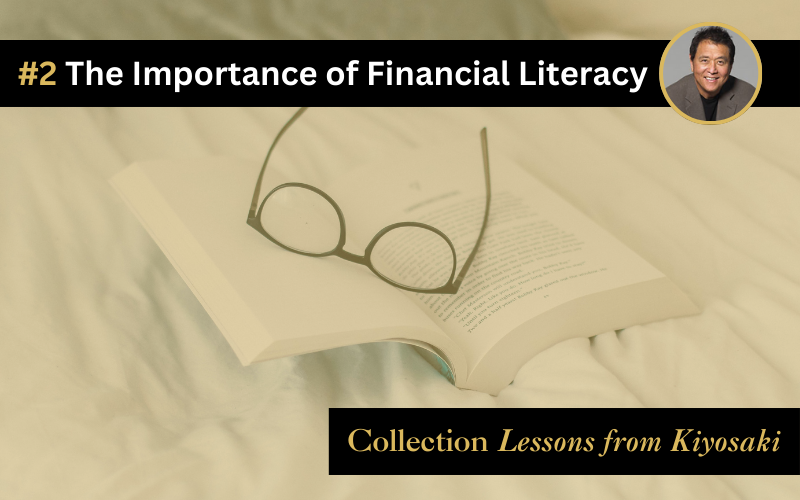Madrid Barajas Airport, 3 PM.
Easter’s over, and now I’ve got a few hours to kill before my flight back to Ireland. The question was: how to pass the time? Well, I figured I’d check out the airport shops and see if there were any decent books around—though I wasn’t expecting much. To my surprise, I actually found a book called “Money in a One Lesson” by Gavin Jackson, a Financial Times columnist.
Though it’s not strictly a book on Financial Education, I believe it’s crucial to grasp the role money plays in our everyday lives and its broader impact on society. The author does an amazing job of breaking down the complexities of money, making it easy to understand, all while weaving in captivating historical stories. From the ancient art of bartering to the use of shells, gold coins, and other early forms of currency, he takes us on a journey through the evolution of payment systems. Here are a few key takeaways:
Money is Trust
Money only works because we all believe in it, in other words, trust is the foundation upon which all monetary systems are built. It’s the trust we have in its ability to help us trade things—like goods for services—that makes it valuable. So really, trust is what holds the whole system together. This trust gets built and kept strong through social rules, institutions, and stable governments. Without this, money would just be some paper or coins with no real worth. We have historical examples, such as the use of gold coins or government-issued paper currencies, illustrate how societies rely on trust to ensure money functions effectively. But on the flip side, Jackson also delves into the fragility of this trust, noting that when it is lost—due to inflation, mismanagement, or crises—the value of money can quickly disintegrate.
Money is Debt
Debt has always been an essential concept closely tied to money. Debt actually predates coins or paper currency. Early societies relied on informal credit systems, where people made promises to pay later, built on mutual trust within their small communities. When formalized money systems came along, they allowed debt to scale beyond those local transactions, paving the way for larger, more complex economies to emerge. So debt is not just as an obligation but as a powerful driver of economic growth, innovation, and cooperation. At the same time, there are risks it carries, as poorly managed debt can lead to instability. By connecting trust and debt, Jackson helps to understand that money isn’t just a physical object. It’s a social construct that enables human collaboration, trade, and progress, but it carries risks if the trust underpinning it is compromised.
3 Functions
Money doesn’t really have value on its own; its worth comes from the fact that we all trust it. It has value because it checks these three boxes:
- Medium of Exchange – It has to be something you can easily trade for stuff.
Before money, barter systems were common, where people exchanged goods directly. However, bartering had significant limitations, such as finding a mutual need between parties. Money removes this limitation, allowing individuals to buy and sell anything without needing a direct exchange of goods.
- Store of Value – It needs to hold its worth over time, meaning it has to be stable.
A reliable store of value allows people to save for future needs, whether for personal purchases, investments, or emergencies. Money retains purchasing power, especially in stable economies. If the value of money erodes over time (as in the case of inflation), it no longer serves effectively as a store of value. Thus, stable money systems are crucial for long-term planning, wealth accumulation, and economic stability.
- Unit of Account – It has to provide a standard measure for valuation purpose.
This function allows businesses and individuals to express the value of goods, services, debts, and savings in a consistent and understandable way. This means prices, wages, and economic activity can be recorded and compared easily. It simplifies budgeting, accounting, and economic decision-making, ensuring that everyone uses the same “language” of value.
Together, the three functions are what make money such a powerful tool in facilitating trade, economic growth, and financial stability.
History and Power
As we dive into the history and power of human societies, it’s a good question to ask: what is money, really? The author points out that it’s not just something we trade with or save—it’s the backbone of civilization. Without it, modern economies and the complex societies we live in wouldn’t exist. Money has been a catalyst for significant historical events, including the rise and fall of empires. On top of that, powerful societies have figured out how to use their currencies as tools to shape the world to fit their goals and values.
The book covers all this and more—how banks operate, what central banks do, a bit about monetary theories, inflation, and even the future of money. The best part? It’s written in a way that’s super engaging, breaking down tricky topics with clear examples and making them easy to understand. If you’ve got some downtime on a business trip or just a free moment, it’s a great read to dive into and enjoy.


